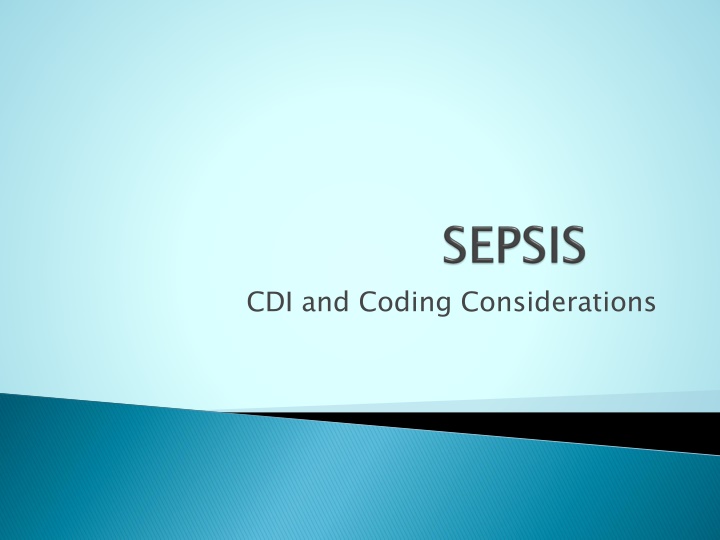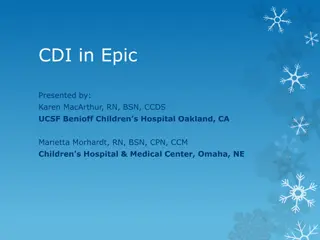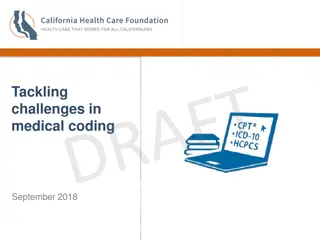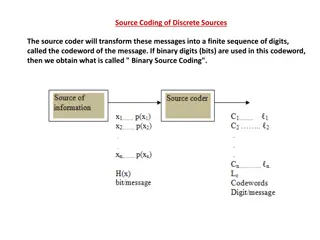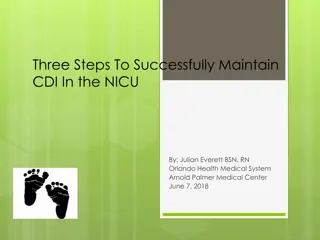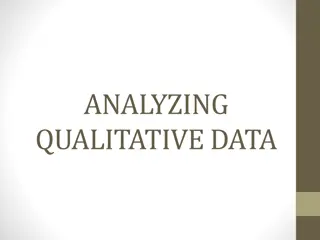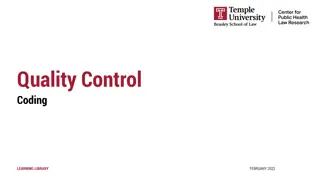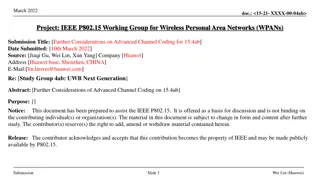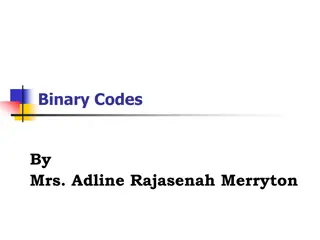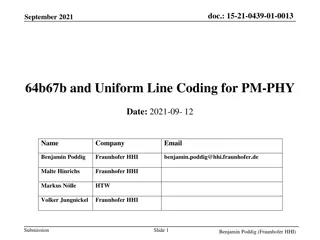CDI and Coding Considerations
The content delves into crucial aspects of CDI and coding, discussing the evolving definitions of sepsis, SIRS criteria validity, septic shock differentiation, and documentation requirements for sepsis cases. Emphasizing the clinical significance and coding guidelines, it sheds light on probable, possible, and suspected sepsis scenarios, while addressing terms like urosepsis and bacteremia.
Download Presentation

Please find below an Image/Link to download the presentation.
The content on the website is provided AS IS for your information and personal use only. It may not be sold, licensed, or shared on other websites without obtaining consent from the author.If you encounter any issues during the download, it is possible that the publisher has removed the file from their server.
You are allowed to download the files provided on this website for personal or commercial use, subject to the condition that they are used lawfully. All files are the property of their respective owners.
The content on the website is provided AS IS for your information and personal use only. It may not be sold, licensed, or shared on other websites without obtaining consent from the author.
E N D
Presentation Transcript
Announced at the SCCM meeting in Orlando on February 22, 2016 Published in JAMA on February 23, 2016 http://www.tinyurl.com/2016sepsis
The SIRS Criteria is valid to the extent that a systemic inflammatory response can be triggered by a variety of infectious and non- infectious conditions. *Signs and Systemic Inflammatory do occur in the absence of infection. For Example Burns, Pancreatitis and other disease states.
Sepsis is now defined as a life organ dysfunction due to a dysregulated host response to infection In this new definition the concept of the non- homeostatic host response to infection is strongly stressed while the SIRS criteria have been The inflammatory response accompanying infection (pyrexia, neutrophilia, etc) often represent an appropriate host response to any infection, and this may not necessarily be life-threatening. Sepsis is now defined as a life- -threatening organ dysfunction due to a dysregulated host response to infection threatening SIRS criteria have been removed removed
Specify if patient has Probable, possible or suspected sepsis on admission. The physician s opinion of clinical sepsis should be documented. Positive blood cultures are not necessary per Coding Clinic Guidelines Do not use Urosepsis if the patient s condition is sepsis (definitive or suspected) from a urinary tract source. Urosepsis is an ambiguous term that classifies and codes to UTI. Bacteremia is not synonymous with a sepsis diagnosis
Septic shock is now defined as a subset of sepsis where underlying circulatory and cellular/metabolic abnormalities are increase mortality Clinical criteria identifying such condition include the need for vasopressors to obtain a MAP 65mmHg AND increase in lactate concentration > 2 mmol/L, despite adequate fluid resuscitation This new definition is mainly focused on the importance to both distinguish septic shock from other forms of circulatory shock and underline the detrimental clinical impact of sepsis-induced cellular metabolism abnormalities.* * Septic shock is now defined as a subset of sepsis where underlying circulatory and cellular/metabolic abnormalities are profound enough to substantially increase mortality . . profound enough to substantially AND an despite adequate fluid resuscitation.* .* * Doesn t mean one can t have other forms of shock (e.g. cardiogenic, hypovolemic, or obstructive shock); if these are present, then they should be documented. * Doesn t mean one can t have other forms of shock (e.g. cardiogenic, hypovolemic, or obstructive shock); if these are present, then they should be documented.
The key element of dysfunction is defined by an acute change in total SOFA score 2 points consequent to infection, reflecting an overall mortality rate of approximately 10 The baseline Sepsis-related Organ Failure Assessment (SOFA) score may be taken as zero unless the patient is known to have previous comorbidity (e.g. head injury, chronic kidney disease, etc.) In light of this, the current definition of 'severe sepsis' becomes obsolete, as does the The key element of sepsis dysfunction is defined by an acute change in total SOFA score 2 points consequent to infection, reflecting an overall mortality rate of approximately 10% % sepsis- -induced organ induced organ the current definition of 'severe sepsis' becomes obsolete, as does the term SIRS term SIRS
SOFA score alone does not give me the words serving as acute organ dysfunctions
Distinguish the terms for the presence of an organism in the blood as: Bacteremia (patient may not be symptomatic) and Sepsis (patient typically is symptomatic). Sepsis = SIRS due to infection. That doesn t mean if the patient meets the SIRS criteria they necessarily have Sepsis. Lactate Levels > 2.0 mmol/L (>4.0 is equivalent to septic shock)
SOFA score alone does not give me the words serving as acute organ dysfunctions
SOFA score alone does not give me the words serving as acute organ dysfunctions
. . . . . .
While Sepsis-3 requires acute organ dysfunction to define sepsis, a provider must document severe sepsis or link the organ dysfunction to sepsis to obtain a code for severe sepsis
Question: (LTCH) following a lengthy hospitalization for sepsis and acute respiratory failure She was transferred to the LTCH for further intravenous antibiotic treatment and management of her multiple medical problems including resolving coagulase- negative staphylococcus sepsis, and respiratory failure Since the sepsis is resolving would it be appropriate to code sepsis as the principal diagnosis? Answer: become aware of a pattern of documentation problems concerning patients transferred to the LTCH with a diagnosis of sepsis Physician advisers reviewing these cases did not agree that these patients were truly septic since they had no clinical indicators If the documentation is unclear as to whether the patient is still septic, query the provider for clarification Facilities should work with the medical staff to improve physician documentation and address any documentation issues Question: The patient was transferred to the long term care hospital Answer: The Editorial Advisory Board (EAB) for Coding Clinic has If the documentation is unclear as to whether the patient is still septic, query the provider for clarification
Before Sepsis-3 A systemic infection code (e.g. A41.9) could be coded without a R65.2x code and still be considered valid if reasonable criteria are met After Sepsis-3 It is Dr. Kennedy s opinion that if the systemic infection code (e.g. A41.9) is coded without a R65.2x code OR an organ dysfunction code is not documented to be associated with sepsis AND/OR that a code for sepsis can be legitimately challenged as a valid diagnosis since no organ dysfunction is present That if the systemic infection code or the R65.2x code is not POA that the systemic infection code (e.g. A41.9) cannot be the principal diagnosis OR AND/OR it is not coded at all
Principal Diagnoses Qualifying for MS- -DRG 870 Principal Diagnoses Qualifying for MS DRG 870- -872, Sepsis 872, Sepsis A021 Salmonella sepsis Salmonella sepsis A021 A207 Septicemic plague A227 A267 A327 A391 Waterhouse-Friderichsen syndrome A392 Acute meningococcemia A393 Chronic meningococcemia A394 Meningococcemia, unspecified A398 9 A399 Meningococcal infection, unspecified A400 A401 A403 pneumoniae A408 A409 A410 1 1 A410 2 2 A411 staphylococcus A412 staphylococcus A413 Sepsis due to anaerobes Gram- -negative sepsis, unspecified Sepsis due to Escherichia coli [E. coli] Sepsis due to Pseudomonas Sepsis due to Serratia Other Gram- -negative sepsis Sepsis due to Enterococcus Other specified sepsis Sepsis, unspecified organism Actinomycotic sepsis Gonococcal sepsis Gram Sepsis due to Escherichia coli [E. coli] Sepsis due to Pseudomonas Sepsis due to Other Gram Sepsis due to Enterococcus Other specified sepsis Sepsis, unspecified organism Actinomycotic sepsis Gonococcal sepsis Disseminated herpesviral disease Candidal Hypovolemic shock Other shock Systemic inflammatory response syndrome (SIRS) of non-infectious origin without acute organ dysfunction Systemic inflammatory response syndrome (SIRS) of non-infectious origin with acute organ dysfunction Severe sepsis without septic shock negative sepsis, unspecified A4150 A4151 A4152 A4153 A4159 A4181 A4189 A419 A427 A5486 A4150 A4151 A4152 A4153 A4159 A4181 A4189 A419 A427 A5486 B007 B377 R571* R578* R6510* * A227 Anthrax sepsis A267 Erysipelothrix A327 Listerial Anthrax sepsis Erysipelothrix sepsis Listerial sepsis sepsis Serratia negative sepsis sepsis Other meningococcal infections Candidal sepsis sepsis B377 A400 Sepsis due to streptococcus, group A A401 Sepsis due to streptococcus, group B A403 Sepsis due to Streptococcus pneumoniae A408 Other streptococcal sepsis A409 Streptococcal sepsis, unspecified A410 Staphylococcus aureus A410 Staphylococcus aureus A411 Sepsis due to other specified staphylococcus A412 Sepsis due to unspecified staphylococcus A413 Sepsis due to Sepsis due to anaerobes Sepsis due to streptococcus, group A Sepsis due to streptococcus, group B Sepsis due to Streptococcus Other streptococcal sepsis Streptococcal sepsis, unspecified Sepsis due to Methicillin susceptible Staphylococcus aureus Sepsis due to Methicillin resistant Staphylococcus aureus Sepsis due to other specified R6511* * Sepsis due to Methicillin susceptible Sepsis due to Methicillin resistant R6520* * R6521* * R7881* Bacteremia * As a Chapter 18 symptom code , it cannot be the PDx if the underlying condition is known Severe sepsis with septic shock Sepsis due to unspecified * As a Chapter 18 symptom code , it cannot be the PDx if the underlying condition is known Sepsis due to Hemophilus Hemophilus influenzae influenzae
Criteria for SIRS must meet two or more of the following: Fever > 38.3 C or hypothermia < 35 C, Hypotension Leukocytosis-WBC > 12,000 or leukopenia, WBC < 4,000 or >10% bands Tachycardia->90 beats/minute Tachypnea-RR > 20 breaths/minute or PaCO2 < 32mmHg Criteria for SIRS must meet two or more of the following: ***Because tachypnea and tachycardia are so common in hospitalized patients for many reasons, they should not ordinarily be used as the only two criteria for diagnosing sepsis.
Altered Mental Status Mottling of the skin or prolonged capillary refill Non-diabetic hyperglycemia (blood Sugar >120) Other evidence of acute organ failure (severe sepsis) ***The diagnosis of sepsis depends entirely on the physician s clinical interpretation of these criteria and their significance.
If these findings can, in the physicians judgment, be easily explained by another coexisting condition (other than the underlying infection), it should be excluded by the physician when deciding whether the patient has sepsis.
Ask? Is it Severe, with shock, with a localized infection, POA, due to post procedural infection, Bacteremia vs. Sepsis (presence of bacteria in the blood Sirs is not synonymous with sepsis. If sirs occurs in presence of sepsis make sure to include both terms.
Sepsis is coded with only code (A41.9 is for unspecified sepsis). Severe sepsis requires a code for sepsis (A41.9), followed by the code for sever sepsis (R65.20), with an additional code to identify the specific acute organ dysfunction. In ICD-10, Sepsis must be specifically diagnosed since there is no code for SIRS due to infection as in ICD-9. ICD-10 has no code for urosepsis and provider must be queried.
Query if clinical indicators are present Underlying infection Febrile, WBC SIRS criteria Met Other findings supporting the potential dx Conflicting data Procedures r/t to End Organ BPA fires
Tissue hypoperfusion persistent after fluid administration evidenced by any of the following conditions: Systolic blood pressure below 90 Mean arterial pressure below 65 A decrease in systolic blood pressure by more than 40 points Lactate level over 4 mmol/L Blood cultures Antibiotics
Crystalloid fluids administered .9% NS or Lactated Ringers. Watch for documentation of Hypotension: Systolic BP lower than 90 Mean arterial pressure lower than 65 A decrease in systolic blood pressure by more than 40 points If hypotension persists after fluid is given, look for the administration of IV Vasopressor Heart and Lung Assessment findings
The documentation of the attending provider supersedes that of all other providers; however, many organizations allow individual providers within the same practice to share the role of the attending provider. The role of the attending providers and the relationship with consulting providers has drastically changed in recent years as the attending more often coordinates care and defers to the consulting provider for specific guidance on specific conditions. Information obtained from the following sources: HcPro, Acdis
Is conflicting, imprecise, incomplete, illegible, ambiguous, or inconsistent Describes or is associated with clinical indicators without a definitive relationship to an underlying diagnosis Includes clinical indicators, diagnostic evaluation, and/or treatment not related to a specific condition or procedure Provides a diagnosis without underlying clinical validation Is unclear for present on admission indicator assignment Information obtained from the following sources: HcPro, Acdis, AHIMA
Are any of the following organ dysfunction criteria present at a site remote from the site of the infection that are not considered to be chronic conditions? Acutely altered mental status SBP less than 90 or MAP less than 65 mmHg SpO2 less than 90% on room air or on supplemental O2 Creatinine greater than 2 mg/dL (176.8 mmol/L) or Urine Output less than 0.5 mL/Kg/hour for greater than 2 hours Bilirubin greater than 2 mg/dL (34.2 mmol/L) Platelet count less than 100,000 L Lactate greater than 4 mmol/L
Build a query for a diagnosis of SIRS and/or sepsis for the following scenario: The patient was admitted for an infection urinary tract infection (UTI), Pyelonephritis (PNA) and meets two SIRS criteria. The patient may be treated with oral or intravenous antibiotics, and may be on a general medical floor (not intensive care). The physician did not document SIRS or sepsis. Editor s Note: Danvers, Massachusetts, answered this question. Contact her at lprescott@hcpro.com. For information regarding CDI Boot Camps visit www.hcprobootcamps.com/courses/10040/overview. - See more at: http://blogs.hcpro.com/acdis/?s=SEPSIS&x=0&y=0#sthash.vx2PsZJS.dpuf Editor s Note: Laurie L. Prescott, RN, MSN, CCDS, CDIP, AHIMA Approved ICD-10-CM/PCS Trainer, and CDI Education Specialist at HCPro in
Would this be considered adding new information to the chart, leading the physician, by introducing a new diagnosis? Editor s Note: Danvers, Massachusetts, answered this question. Contact her at lprescott@hcpro.com. For information regarding CDI Boot Camps visit www.hcprobootcamps.com/courses/10040/overview. - See more at: http://blogs.hcpro.com/acdis/?s=SEPSIS&x=0&y=0#sthash.vx2PsZJS.dpuf Editor s Note: Laurie L. Prescott, RN, MSN, CCDS, CDIP, AHIMA Approved ICD-10-CM/PCS Trainer, and CDI Education Specialist at HCPro in
Providing a new diagnosis as an option in a multiple choice list, as supported and substantiated by referenced clinical indicators from the health record, is not introducing new information. Editor s Note: Danvers, Massachusetts, answered this question. Contact her at lprescott@hcpro.com. For information regarding CDI Boot Camps visit www.hcprobootcamps.com/courses/10040/overview. - See more at: http://blogs.hcpro.com/acdis/?s=SEPSIS&x=0&y=0#sthash.vx2PsZJS.dpuf Editor s Note: Laurie L. Prescott, RN, MSN, CCDS, CDIP, AHIMA Approved ICD-10-CM/PCS Trainer, and CDI Education Specialist at HCPro in
If you have a patient that demonstrates clinical indicators to support the diagnosis of sepsis, you may submit a query to clarify if this diagnosis is appropriate. In the body of the query, you would also include those clinical indicators and evidence of treatment that supports your rational for querying the physician.
Use the SIRS criteria to support sepsis, with caution. The criteria cannot be explained by another existing condition for example, tachycardia when the patient has atrial fibrillation. Review the Surviving Sepsis Campaign s nationally supported clinical criteria and treatment bundles that can be used to support the diagnosis of sepsis. Editor s Note: Education Specialist at HCPro in Danvers, Massachusetts, answered this question. Contact her at lprescott@hcpro.com. For information regarding CDI Boot Camps visit www.hcprobootcamps.com/courses/10040/overview. - See more at: http://blogs.hcpro.com/acdis/?s=SEPSIS&x=0&y=0#sthash.vx2PsZJS.dpuf Editor s Note: Laurie L. Prescott, RN, MSN, CCDS, CDIP, AHIMA Approved ICD-10-CM/PCS Trainer, and CDI
Patient 2345 was admitted with a UTI. The ED record indicates patient was febrile with a temperature of 102.7, heart rate of 98, Laboratory results showed a white blood cell count of 13,500 with 12% bands, hyperlactatemia, and altered mental status. Blood cultures pending. Antibiotics ordered with fluid bolus. Based on these clinical indicators, can the patient s status be further clarified as: UTI with sepsis UTI only Other _____________________ Unable to determine Editor s Note: Education Specialist at HCPro in Danvers, Massachusetts, answered this question. Contact her at lprescott@hcpro.com. For information regarding CDI Boot Camps visit www.hcprobootcamps.com/courses/10040/overview. - See more at: http://blogs.hcpro.com/acdis/?s=SEPSIS&x=0&y=0#sthash.vx2PsZJS.dpuf Editor s Note: Laurie L. Prescott, RN, MSN, CCDS, CDIP, AHIMA Approved ICD-10-CM/PCS Trainer, and CDI
Theres sepsis and theres alternative terms that are not sepsis. Putting a patient on a sepsis protocol is not a diagnosis of sepsis. A sepsis protocol says the patient may have an infection and it may have advanced far enough to be serious and have systemic manifestations with increased risk of death, or it may turn out, after workup, that it wasn t sepsis at all, or it may not be an infection at all. Danvers, Massachusetts, answered this question. Contact her at lprescott@hcpro.com. For information regarding CDI Boot Camps visit www.hcprobootcamps.com/courses/10040/overview. - See more at: http://blogs.hcpro.com/acdis/?s=SEPSIS&x=0&y=0#sthash.vx2PsZJS.dpuf Editor s Note: Editor s Note: Laurie L. Prescott, RN, MSN, CCDS, CDIP, AHIMA Approved ICD-10-CM/PCS Trainer, and CDI Education Specialist at HCPro in
A patient who has criteria of systemic inflammatory response syndrome (SIRS) has abnormalities in vital signs or abnormalities of lab tests. That alone is not sepsis under any circumstances until it s proven to be sepsis. Most patients do not exhibit the clinical indicators to even meet the criteria and, in many that did meet the criteria, the abnormalities had nothing to do with the infection.
Acute diverticulitis is acute diverticulitis. Acute otitis media is acute otitis media. Most bacterial infections have two of the four criteria of SIRS and most of these patients are not sick. Most patients seen in an emergency room with an infection and two of the four criteria that look like SIRS actually go home.
Using the term sepsis syndrome is another way of trying to get around truth. Once upon a time, sepsis syndrome actually meant sepsis; however it has evolved to be equivalent to SIRS and has no validity as a codable term at all until, and if, it is determined that the patient has actually has sepsis. In fact, Coding Clinic even came to that conclusion in Second Quarter 2012 p. 21, and people who are assigning sepsis codes based on documentation of sepsis syndrome are taking quite a risk.
Acute diverticulitis is acute diverticulitis. Acute otitis media is acute otitis media. Most bacterial infections have two of the four criteria of SIRS and most of these patients are not sick. Most patients seen in an emergency room with an infection and two of the four criteria that look like SIRS actually go home.
Using the term sepsis syndrome is another way of trying to get around truth. Once upon a time, sepsis syndrome actually meant sepsis; however it has evolved to be equivalent to SIRS and has no validity as a coded term at all until, and if, it is determined that the patient has actually has sepsis. In fact, Coding Clinic even came to that conclusion in Second Quarter 2012 p. 21, and people who are assigning sepsis codes based on documentation of sepsis syndrome are taking quite a risk.
QUESTIONS? Thanks for your time!
